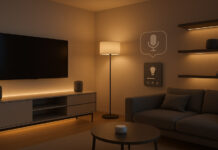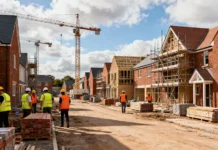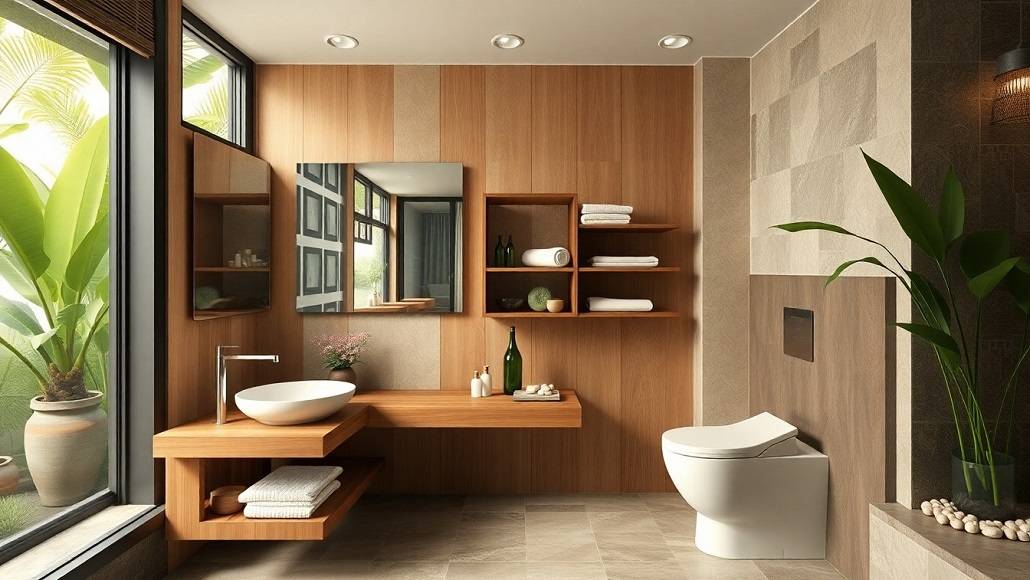Advancements in Bathroom and Sanitary Ware Design
The bathroom has for a long time been regarded as one of the most important rooms in a dwelling, and current trends indicate an increase in awareness of its value in healthy living, sustainability, and creative design. Against the backdrop of quick urbanization and environmental issues, innovative nations such as India and Indonesia are spearheading the revolution of eco-friendly bathroom and sanitary ware design by incorporating sustainable materials and multi-functional solutions. This article discusses the development of bathroom and sanitary ware design with a focus on how these trends support international environmental objectives while addressing the changing demands of contemporary lifestyles.
The Shift Towards Sustainability
Sustainability has recently emerged as a top priority in bathroom design and construction. As consumers become increasingly green-conscious, they are demanding more environmentally friendly materials and water-saving fixtures. Building construction, a report by the World Green Building Council finds, contributes around 39% of all carbon emissions worldwide, thus sustainable design is all the more crucial in efforts to curb climate change.
India and Indonesia are among countries more widely embracing sustainable materials in bathroom design as a sign of environmental conservation. Bamboo, for example, is being used for cabinetry and flooring because it is a rapidly renewing and renewable material that is durable as well as aesthetically pleasing. The Indian government has promoted bamboo cultivation under the National Bamboo Mission, acknowledging its use within construction including bathroom use. This change not only encourages ecologically friendly practices but also sustains local economies through the generation of employment opportunities in bamboo cultivation and processing.
Another cutting-edge material that is catching on is recycled glass, which may be reused to create tiles, sinks, and countertops. Not only does this method divert waste, but it also adds an exclusive, contemporary look to bathrooms. In Indonesia, local craftsmen are using recycled glass in their designs, and creating beautiful mosaics that honor cultural heritage while also being sustainable.
Reclaimed wood is similarly gaining popularity in bathroom design, providing a distressed but elegant option over traditional materials. By repurposing wood from existing buildings or furniture, designers are not only minimizing waste but also creating unique and beautiful character in bathroom areas. The complement of these materials is completely in tune with the worldwide movement towards sustainability and green living.
Innovative Designs and Technology Integration
Advancements in bathroom and sanitary ware design are not limited to materials; they also encompass innovative designs that enhance functionality and user experience. Modern bathrooms are increasingly being designed as multifunctional spaces that cater to various needs, from relaxation to productivity.
In city environments where space tends to be scarce, functionality maximization is important. Designers now integrate smart technology into bathroom fixtures and designs. Smart mirrors with built-in LED lights and displays offer important information, including weather reports and news feeds, and also act as a vanity. Additionally, smart showers and faucets with touchless features save water and add convenience, allowing daily activities to be done more efficiently.
In addition, open-concept bathrooms that blend harmoniously with living areas are trending increasingly. This type of design creates a feeling of openness and evokes a state of relaxation, in line with the tenets of biophilic design, which insists on a link with nature. Including large windows, plants, and natural light in bathroom design can enhance psychological well-being and develop an atmosphere of calmness.
The incorporation of multifunctional features, like foldable or convertible furniture, enables residents to transform their bathroom areas for various purposes. For example, the bathtub can be constructed as a soaking tub for leisure time and transformed into a shower area when required. Such flexibility is highly relevant in small urban houses, where each square foot counts.
Cultural Influences and Regional Trends
The design progression of bathrooms and sanitary ware in Asia is also shaped by culture and tradition. In Japan, for instance, the bathroom is not just a functional room but a complete system of well-being. Japanese bathrooms are usually equipped with “ofuro,” or soaking bathtubs, which are for relaxation and stress relief. It is not only a way to save tradition but also to provide a better experience for the user to integrate such cultural practices in modern bathroom designs.
Furthermore, the importance of cleanliness in Asian societies has driven the evolution of sanitary ware. The popularity of bidets and more advanced toilet systems that have features like heated seats, self-cleaning functions, and integrated bidets is a result of a shift towards comfort and cleanliness. In a report by Grand View Research, the smart toilet market globally is projected to hit $2.57 billion in 2025, with major contributions coming from Asian markets.
Regional trends are also factors in the materials used in bathroom design. On the coastlines of Indonesia, for instance, designers use indigenous stone and tile to establish a sense of place and an environmental connection. Not only do these materials add visual appeal, but they are also resilient to the issues posed by humidity and salt exposure.
Challenges and Future Directions
Although the developments in bathroom and sanitary ware design are uplifting, there are obstacles in realizing common adoption of sustainable measures. Cost is among the major impediments, as green materials and new technologies tend to be more costly. Nevertheless, as demand rises and production technology advances, the costs should gradually come down.
Education and awareness are also important in encouraging sustainable bathroom design. Builders, homeowners, and designers need to be educated regarding the advantages of utilizing green materials and technologies. Greater interaction and convergence among stakeholders can encourage a culture of sustainability within construction.
In the future, bathroom design will most likely place even more focus on sustainability and technology integration.Cities will keep growing, and as they do, there will be a greater need for spaces that are both useful and versatile. Using solar panels and other renewable energy sources to heat water will make bathroom designs even more eco-friendly.
Conclusion
Lastly, new ideas in the design of bathroom and sanitary items are part of a bigger movement in the building industry towards sustainability and new ideas. India and Indonesia are among the nations at the forefront in adapting eco-friendly materials, including bamboo, recycled glass, and reclaimed wood, in their designs, as a way of aligning with international environmental objectives while also supporting local economies.
As bathrooms evolve into versatile spaces catering to work, relaxation, and family activities, the integration of smart technologies and cultural influences will enhance user experiences and promote well-being. By addressing challenges related to expenses and awareness, the industry can broaden the scope of sustainable design, ultimately producing attractive, functional, and eco-friendly bathroom environments suited to contemporary lifestyles.





























